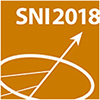Speaker
Description
Fourth generation synchrotrons like MAX IV in Lund, Sweden, provide a brilliance gain of about two orders in magnitude. This puts new challenges on the fabrication of optics, sample stages, detectors, and data analysis chains. Here we focus on the focusing properties of the Kirkpatrick-Baez mirror system at the NanoMAX beamline [1], and present recent commissioning results.
We compare alignmenten tolerances from a geometrical model to direct measurements of the caustic obtained by X-ray waveguide scanning both in focus and in defocus planes, providing a rule of thumb on beam broadening and focal plane shift. The geometrical model is enhanced by coherent wave-optical simulations [2].
With its secondary source, the NanoMAX offers the possibility to change the numerical aperture of the optics (entrance slits) and the coherence properties (secondary source slits) indepedently. We exploit this to measure the degree of lateral coherence for different settings, and compare the experimental data with partially coherent wave-optical simulations [3].
[1] U. Johansson et al: NanoMAX: A hard x-ray nano probe beamline at MAX IV, Proc SPIE 8851 (2013)
[2] Ch. Morawe, M. Osterhoff: Hard X-Ray Focusing with Curved Reflective Multilayers, XROI (2010).
[3] T. Salditt et al, Partially coherent nano-focused x-ray radiation characterized by Talbot interferometry, Opt Express 19 (2011).

